
The New General Catalogue of Nebulae and Clusters of Stars is an astronomical catalogue of deep-sky objects compiled by John Louis Emil Dreyer in 1888. The NGC contains 7,840 objects, including galaxies, star clusters and emission nebulae. Dreyer published two supplements to the NGC in 1895 and 1908, known as the Index Catalogues, describing a further 5,386 astronomical objects. Thousands of these objects are best known by their NGC or IC numbers, which remain in widespread use.

The Atlas of Peculiar Galaxies is a catalog of peculiar galaxies produced by Halton Arp in 1966. A total of 338 galaxies are presented in the atlas, which was originally published in 1966 by the California Institute of Technology. The primary goal of the catalog was to present photographs of examples of the different kinds of peculiar structures found among galaxies.
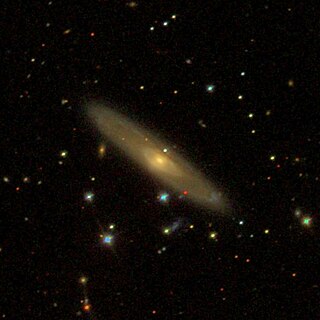
NGC 13 is a spiral galaxy in the constellation Andromeda. It is estimated to be about 220 million light-years away from the Sun. It was discovered on November 26, 1790, by William Herschel.

NGC 26 is a spiral galaxy in the Pegasus constellation. It was discovered on 14 September 1865 by Heinrich Louis d'Arrest.

NGC 7332 is an edge-on peculiar lenticular galaxy located about 67 million light-years away in the constellation Pegasus. It possesses a -shaped bulge, associated with stellar bar. It was discovered on September 19, 1784 by the astronomer William Herschel.
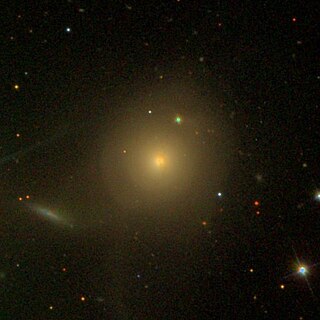
NGC 467 is an unbarred lenticular galaxy in the constellation Pisces. It was discovered on 8 October 1785 by William Herschel.

NGC 112 is a barred spiral galaxy located in the constellation Andromeda. It was discovered by American astronomer Lewis Swift on September 17, 1885. The galaxy lies approximately 295 million light-years from Earth, and is about 75,000 light-years in diameter.

NGC 361 is an open cluster in the Small Magellanic Cloud. It is located in the constellation Tucana. It was discovered on September 6, 1826, by James Dunlop. It was described by Dreyer as "very very faint, pretty large, very little extended, very gradually brighter middle." At an aperture of 31.0 arcseconds, its apparent V-band magnitude is 12.24, but at this wavelength, it has 0.40 magnitudes of interstellar extinction.
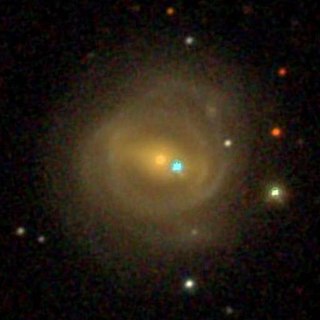
NGC 7065 Is a barred spiral galaxy located about 320 million light-years away in the constellation of Aquarius. NGC 7065 is part of a pair of galaxies that contains the galaxy NGC 7065A. NGC 7065 was discovered by astronomer Albert Marth on August 3, 1864.

NGC 7083 is an unbarred spiral galaxy located about 134 million light-years away in the constellation of Indus. It is also classified as a flocculent spiral galaxy. NGC 7083 was discovered by astronomer James Dunlop on August 28, 1826.
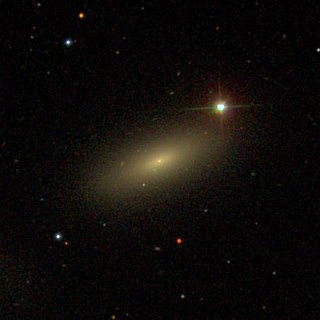
NGC 4436 is a lenticular or dwarf elliptical galaxy located about 60 million light-years away in the constellation of Virgo. NGC 4436 was discovered by astronomer William Herschel on April 17, 1784. The galaxy is a member of the Virgo Cluster.

NGC 496, also occasionally referred to as PGC 5037, UGC 927 or GC 288, is a spiral galaxy in the constellation Pisces. It is located approximately 250 million light-years from the Solar System and was discovered on 12 September, 1784 by astronomer William Herschel.

NGC 3837 is an elliptical galaxy located about 290 million light-years away in the constellation Leo. It was discovered by astronomer William Herschel on April 26, 1785. NGC 3837 is a member of the Leo Cluster.

NGC 3860 is a spiral galaxy located about 340 million light-years away in the constellation Leo. NGC 3860 was discovered by astronomer William Herschel on April 27, 1785. The galaxy is a member of the Leo Cluster and is a low-luminosity AGN (LLAGN). Gavazzi et al. however classified NGC 3860 as a strong AGN which may have been triggered by a supermassive black hole in the center of the galaxy.

NGC 779 is a spiral galaxy seen edge-on, located in the constellation Cetus. It is located at a distance of circa 60 million light years from Earth, which, given its apparent dimensions, means that NGC 779 is about 70,000 light years across. It was discovered by William Herschel on September 10, 1785.
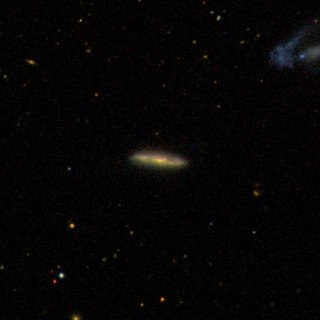
NGC 3006 is an edge-on spiral galaxy in the constellation Ursa Major. It has an apparent magnitude of 15. It was discovered by the astronomer Bindon Stoney on January 25, 1851.

NGC 4643 is a lenticular galaxy located in the constellation Virgo. It is a member of the NGC 4753 Group of galaxies, which is a member of the Virgo II Groups, a series of galaxies and galaxy clusters strung out from the southern edge of the Virgo Supercluster.
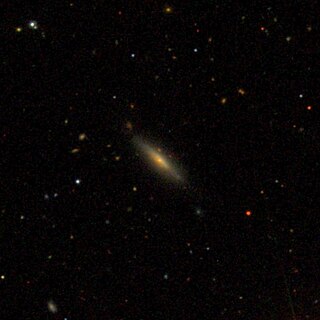
NGC 3602 is a barred spiral galaxy in the constellation Leo. It was discovered on March 4, 1865 by the astronomer Albert Marth.
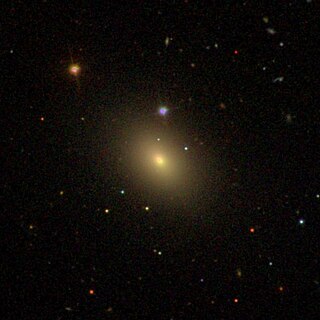
NGC 3598 is a lenticular galaxy located in the constellation Leo. It was discovered by the astronomer Albert Marth on March 4, 1865.
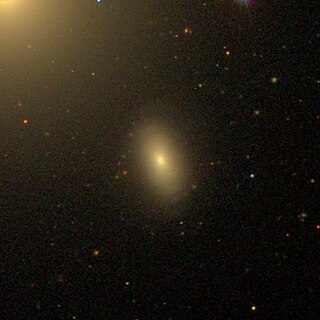
NGC 3605 is an elliptical galaxy located in the constellation Leo. It was discovered on March 14, 1784, by the astronomer William Herschel.




















